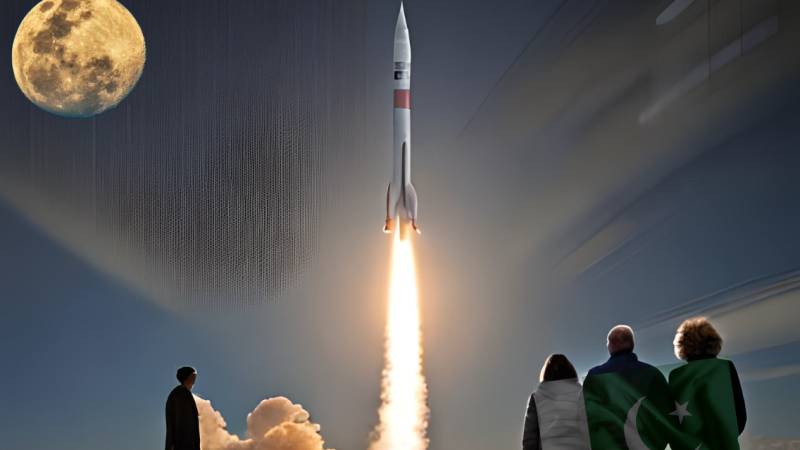
Chandrayaan-3 is slowly descending towards the surface of the Moon. If things go as planned, the spacecraft will make a soft landing at 5:34 pm, Pakistan time, on Wednesday, August 23rd. I love such precision, as this is what it takes to undergo a complex mission about 380,000 kilometres away!
If successful, India will become only the fourth country, after the US, the former Soviet Union, and China, to achieve a soft-landing on the Moon. In fact, the last 20 years have seen only three successful landings, and they are all from China. The rest have crashed on the lunar surface, including Russia’s Luna-25 just this past Sunday.
For Pakistanis, this is a tough mission. Pakistan’s own space programme, despite a promising start in the 1960s, is languishing. To make things worse, nationalistic chest-thumping is part and parcel of space programmes, despite the lofty rhetoric of “For All Mankind”. India is no exception to that, and indeed, its space programme is fast becoming one of the best in the world.
Failures are, in fact, an essential part of science and of life. It is the lessons learnt from failures that can be truly transformative
As humans, it is often natural to feel the tribal or nationalistic pull of the competition. To borrow an analogy from cricket, for many Pakistanis, this is like watching a World Cup Final between India and Australia, after failing to get out of even the group stage.
This can partly explain, but not excuse, the churlish comments of the former Science Minister, Fawad Chaudhry, to the soft-landing failure of the Chandrayaan-2 mission in 2019. Failures are, in fact, an essential part of science and of life. It is the lessons learnt from failures that can be truly transformative.
In this particular case, the Indian space agency, ISRO, identified the software glitch that led Chandrayaan-2 slightly off course, crashing 700 meters from the target site. Agonizingly close. That problem appears to have been resolved. But there are still no guarantees. The Moon is still a few hundred thousand kilometres away. But the only way to ensure success is to try, and this is exactly what India is doing.
If Chandrayan-3 is successful, on the one side, we are going to see a lot of bemoaning and lamenting on the state of science and education in Pakistan
If successful, Chandrayaan-3 will become the first spacecraft to land in the south-polar region of the Moon (about 69 degrees south). This area is of immense importance. There is evidence of the presence of water ice in the permanently shadowed craters in the lunar south pole. In fact, the Indian orbiter, Chandrayaan-1, helped make that discovery back in 2009. As a result, the southern polar region is expected to be the site of future human settlements, and US and China are already planning on sending astronauts/taikonauts there in the next couple of years.
Pakistan is not really in any conversation about missions to the Moon. This could change. But right now, this is the reality. If Chandrayan-3 is successful, on the one side, we are going to see a lot of bemoaning and lamenting on the state of science and education in Pakistan. We are also going to get cheap memes that will deny or belittle the success of the mission. This latter reaction, we will be told, is justified because of the jingoism and taunting expressed by some of the extreme elements in India.
There is always an excuse and blame to go around. Zero-sum appears to be the only accepted game.
But this doesn’t have to be the case. Competition doesn’t have to bring out the worst human instincts. Instead of anger and envy, can we see the Indian achievements in space out of wonder and admiration? I don’t know where Pakistan’s space program will be in the next 20 or 30 years. But more than any science investment, a genuine respect for others’ achievements can serve as a seed for any potential development in space.
In the meantime, let’s root for and celebrate a successful landing on the Moon by the Vikram lander of Chandrayaan-3 mission!

